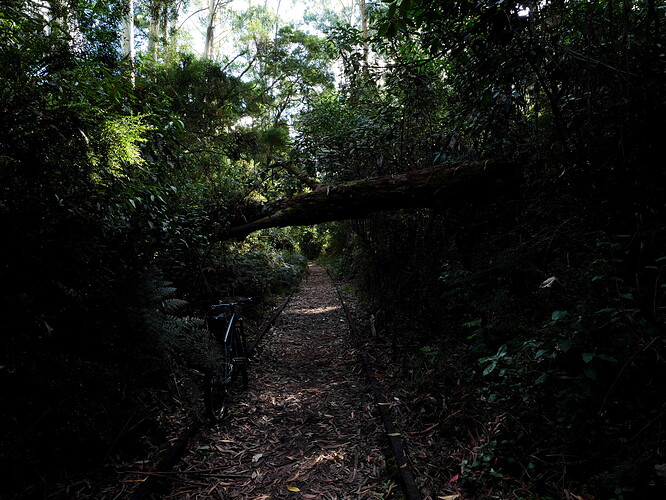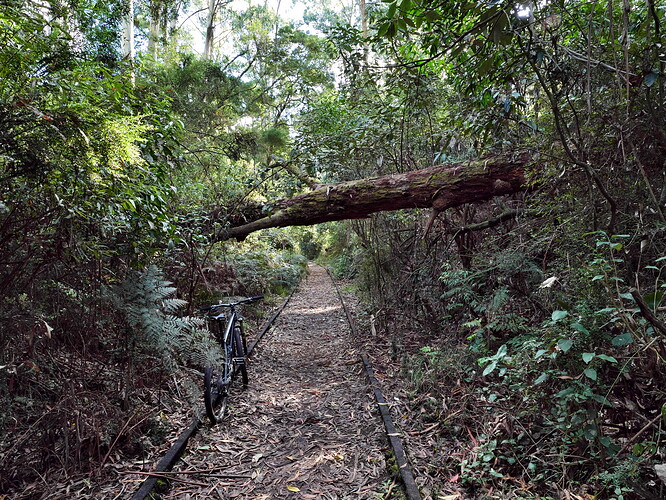Some of you might be following Thomas Eisl’s excellent tutorials. He has one titled “Small Sensor - Low Light” referring to m4/3 in low light: Small Sensor – Low Light: Go Big or Go Home? Shedding Light on Some Common Misconceptions - YouTube
He finishes by stressing the importance of correct exposure. He suggests we adopt them methods used for exposing slide film. I can well remember those days but can’t remember doing anything much different. Can anyone explain what he is getting at?
I think he means that you had to get the exposure correct as there was little room for error. Any slight overexposure meant white areas and washed out colour and a slight underexposure meant a muddy image. I seem to remember it was a very precise medium which had a small dynamic range. But it all seems a long time ago.
It was always recommended that you underexposed reversal (slide)n film slightly to boost saturation and minimise highlight loss as you can’t do any processing afterwards, unlike negative film. I’m not sure what is meant by “correct” exposure in relation to digital unless the photographer has no ability to process the image the camera produces.
It’s also worth noting that slide film speed - the ISO number - often didn’t align with the actual speed for various reasons so the advice tended to compensate for that.
In low light you don’t want to underexpose though - better to expose to the right and increase exposure until you almost blow out the highlights, or only lose a bit highlights that you can afford to lose.
Overal, proper exposure I think is the best - not under or over expose. Which is what Thomas means indeed, I think.
I was a really heavy slide shooter for 40 years, I even developed it myself, and while I agree that is always a good idea to expose correctly, I don’t think slide film applies here as the latitude of reversal film is very narrow compared to current sensors. Roughly 4-5 stops max, so overexpose slide film, and the acetate turns crystal clear, no details whatsoever, so back in the day it was really important to expose for the highlights avoiding any overexposure, unless it was an intended effect.
With digital sensors, exposing to the right, as mentioned, is a better idea. You don’t want too dark shadows. Smaller photosites can get really noisy if they don’t get enough light. I have also recovered blown highlights that looked lost to me, but bringing the slider down recovers details nicely in most but the worst overexposed cases.
Of course, forget about shooting JPEG. RAW is the way to go.
BTW, this guy need to speed up his talking. I almost fell asleep.
From what you guys are saying, I seems to me that what Eisl is saying is that, if the exposure of the subject is perfect in the shot, then there is little difference between m4/3 and FF.
That suggests m4/3 shooters need to be better at the exposure game. It also suggests that darks and lights may have to be sacrificed (or bracketed) for the benefit of the subject. I can live with that.
That is always been my experience with m43. Although no format will hold the wide latitude of the real world. Is always a compromise, and is your task to make the decision what is more important to you, highlights or shadows. If both, definitively bracketing and merging is the way to go, although impractical for moving subjects.
There’s not too much wrong with the dynamic range of modern m4/3 sensors as far as I’m concerned.
Here’s an example out of my G9. This is a direct from raw to jpeg conversion, no editing at all
And here’s a pretty light edit using nothing fancy at all, no noise reduction software, just a simple run through SilkyPix developer Pro. You can zoom in to 100% at full 20MP resolution, & it’s pretty damn clean. Run it through some decent NR software, & 100% viewing is perfectly acceptable.
The Austrian presenter is recommending “proper” exposure to allow for more effective suppression of noise. However, proper exposure at time of shooting is difficult to be sure of - you have the histogram and/or zebra but their appearance are according to the viewfinder JPG as converted from RAW.
I have been happiest with the results of shooting in low light by shooting RAW + JPG, setting Auto ISO, max ISO 3200, applying a minimum shutter speed appropriate to the subject, say 1/60 for human subjects in normal motion, and applying exposure compensation to keep the highlights for sure away from causing zebra stripes and/or the right side of the histogram. The output JPG and RAW thus look a bit dim usually, the camera-determined ISO being lower than it would be for “proper” exposure. In post I bring up the brightness and deal with noise and shadow detail. All of this is because, to me, subject motion blur and highlight clipping totally ruin an image; noise does not.
Even in ample outdoor light this same technique works great. The camera-determined ISO value under Auto ISO is usually the base ISO so there is hardly any noise to correct.
I think it’s horses for course. I’m into birds at the moment. For me it’s exposure, focus and low ISO on the bird that’s important. It’s nothing without good feather detail. If background highlights are blown, that’s unfortunate. I’ll attempt to recover them or crop them but not at the expense of the bird.
Ideally one would use spot metering, but meter and recompose is not practical with hoppity skipping birds. Also spot or centre weighted tends to capture too much of the near background. For this reason, I like to use ESP + exposure compensation. ESP gives a good average starting point. My issue is that in applying exposure compensation to get the bird right, I have only the visual jpeg of the bird in the EVF to go by. So far, that seems to work quite well but I don’t know if that visual jpeg representation is necessarily giving me the best exposure from the point of view of the bird IQ. Any thoughts?
I agree with you.
Funny, my preferred subjects are the opposite of your birds, i.e. theatrical performers lit by strong illumination but against dark backgrounds. I study their foreheads and costumes looking to preserve subjects’ tones and highlights. I too rely on the exposure comp dial and use the EVF appearance including the zebra pattern. I bring images that are a bit dim into post. Oh, another thing, I am careful to lock in a fixed color temp for the shoot using a white card, not using Auto White Balance. That reduces slightly my need to treat color noise in post as well as making post processing of a batch more efficient overall. Pleasing results.
Thanks for reminding me to bring a grey card on my up coming trip to Europe.
Lots of good exposure info on the RawDigger or FastRawViewer website to keep you entertained for hours.
Using full dynamic range of your camera.
Generally, I shoot and try to get the white patch on a ColorChecker Passport to be RGB=244. Better still is if all three RGB numbers are equal to telling me my WB was okay.
If you want a challenge, trying plugging your camera directly into a printer and printing from it and no editing involved. Nightmare to sort out, but it is telling that something is off someplace in your workflow verses slop-shooting in RAW and spending time in post editing work to fix it.
That link takes an extremely in-depth approach. It’s a bit beyond my amateurish technique but it’s food for thought. Thanks for posting.
It’s a level of precision to eke out every last bit of DR that doesn’t really matter for most of what I shoot.
With my Olympus cameras, in high DR situations I just increase exposure until the flag color (red) appears in the highlights I want to keep. The flag colors and histogram may be calculated based on JPEG, I don’t know, but the difference between what I would get if they were based on raw would only be more forgiving anyway. I do wish that my Olympus cameras would be fully WYSIWYG and also would expand the flag colors when the exposure is off by more than 3 EV, I don’t see why that isn’t possible.
When I was out playing with the HDR settings on the E-M1X where the camera does a burst of different exposures, I noticed in the burst of five that the outcome often seemed to be more towards the burst being under-exposure that going over, and that includes the supposedly correctly metered one. At some point, I increased the EV to a +0.7 over what the meter was showing me in doing the HDR burst.
I suppose the best thing to do is try and come up with an over-all average, maybe using the FastRawViewer as you can alter the image’s exposure and see where its histogram begins to bump around the +3EV over-exposure range which is where my E-M1X begins to clip the whites at. Then alter your meter accordingly.
I think the FastRawViewer software may be a bit different than what the RawDigger software shows in which the later may show a little more headroom or exposure latitude, but I’m not certain on that.
I just did some rough tests with an OM-1. Shooting raw, started with exposure set 1/3 stop before red clipping warning showed in Live View. Took shots, increasing 1/3 stops each time for 12 shots. I put these into Lightroom, clicked the highlight clipping box on the histogram and looked at each image. The red did no show up until it was 1 2/3 stops over the starting image. This implies to me that, at least for the OM-1, raw has a 1 2/3 stop (5 clicks) overhead over jpeg. This corresponds to what I’ve read elsewhere.
I guess what that means is, if your exposure looks good but you see some red where it shouldn’t be, take exposure compensation down 5 clicks. If the red has gone, you’re good to go back where you were. Yes, as david5833 says, it’s a pity the manufacturers haven’t factored that in.
Personally, I don’t think there’s any such thing as “correct exposure” It’s a moving target, depending on the camera you’re using, as well as the subject matter, and any artistic flavor you might want to add. Pixel peepers & a lot of forumtographers seem obsessed with capturing every single last little detail over the complete tonal range, as to them, technical perfection is what makes a quality image. Me, not so much. Which has a lot to do with why I’m pretty damn happy with what m4/3 brings to the table I suspect.
In saying that, if I want to capture maximum dynamic range in a scene with my Panasonic cameras I set the jpeg picture style to natural or standard (chosen picture style very much has an effect on the histogram & EVF image display) turn off iDynamic, set the blinkies to 105% (I think) set highlight/shadow to off/standard, then not worry too much if I blow out solid colours, such as a white/grey sky, solid blue sky etc etc. Not into carrying a tripod/monopod around, so don’t bother too much about exposure bracketing.
Besides, the only people that really notice are other photographers, & I’m not all that concerned about what they think ![]()
![]()
![]()
We probably all do much the same 95% of the time.

